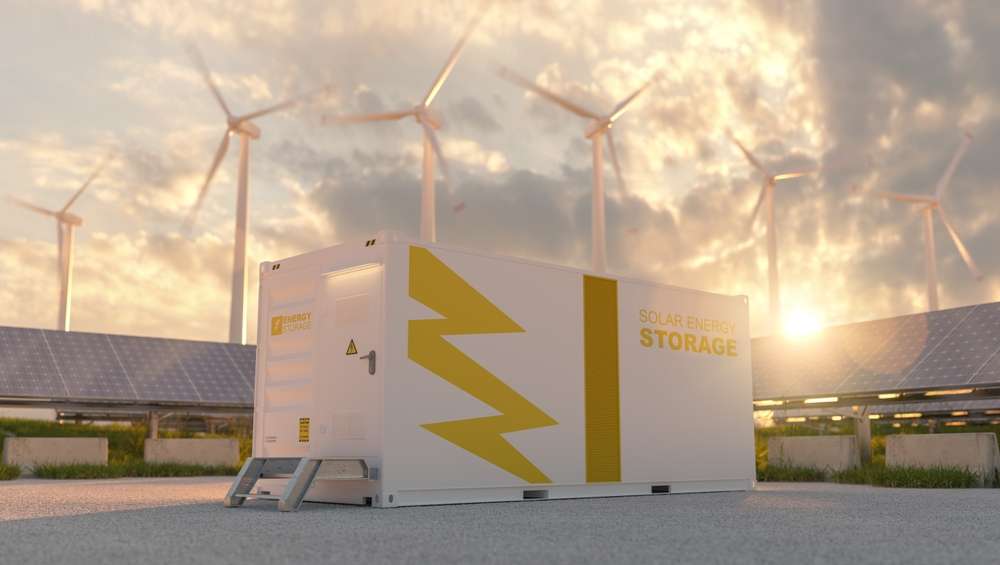10kWh power storage – ideal for single-family homes
Home energy storage solutions have transformed how households manage their electricity needs. With 10kWh battery systems becoming increasingly accessible, homeowners now have a reliable option for storing solar energy, providing backup power during outages, and potentially reducing electricity bills. These compact yet powerful systems are particularly well-suited for single-family homes looking to increase energy independence.

The growing demand for sustainable energy solutions has made 10kWh power storage systems increasingly popular among homeowners. These battery systems offer the perfect balance of capacity and practicality for typical single-family homes, providing enough power to run essential appliances during outages while remaining compact enough to install in most residential settings. As utility rates continue to fluctuate and grid reliability becomes a concern in many regions, these mid-sized energy storage solutions provide homeowners with greater control over their electricity usage and costs.
What makes 10kWh home battery storage ideal for families?
A 10kWh battery storage system represents an optimal capacity for most single-family homes. This size strikes an effective balance between utility and cost, providing enough power to run essential household appliances during short outages while not requiring the significant investment of larger systems. For context, a typical refrigerator consumes about 1-2kWh per day, while a home computer might use 0.1kWh per hour of operation. With 10kWh of storage, families can keep critical systems running for several hours or even days with careful energy management.
These systems also integrate seamlessly with residential solar installations, allowing homeowners to store excess energy produced during sunny periods for use during evenings or cloudy days. This capability maximizes the value of solar investments and increases household energy independence. Additionally, modern 10kWh systems typically feature compact designs that can be wall-mounted or floor-installed in garages, utility rooms, or basements, making them practical for homes with limited space.
How to compare 10kW battery storage options for your home
When evaluating different 10kWh power storage solutions, several key factors should guide your decision. First, consider the battery chemistry—lithium-ion batteries typically offer better depth of discharge and longer lifespans than lead-acid alternatives, though at a higher initial cost. Round-trip efficiency is another critical metric, indicating how much of the energy stored in the battery can actually be used (with most quality systems achieving 90% or higher).
Warranty terms vary significantly between manufacturers, with premium systems offering 10-year guarantees while budget options might provide only 5 years of coverage. The cycle life—how many complete charge and discharge cycles the battery can undergo before significant degradation—ranges from 3,000 to over 10,000 cycles depending on the technology and quality. Finally, consider compatibility with existing or planned solar systems, as well as the availability of monitoring software that allows you to track performance and optimize energy usage.
What are the installation requirements for a 10kWh power storage system?
Installing a 10kWh battery storage system typically requires professional expertise to ensure safety and compliance with local electrical codes. Most installations need a dedicated space with proper ventilation and temperature control, as batteries perform optimally in environments between 10-30°C (50-86°F). The installation area should be clean, dry, and protected from extreme weather conditions. Physical space requirements vary by manufacturer and model, but typically range from the size of a small refrigerator to a large suitcase for wall-mounted units.
Electrical requirements include appropriate circuit breakers and sometimes a dedicated sub-panel for critical loads. Many modern systems incorporate inverters that convert the DC power stored in the battery to AC power used by household appliances. Some jurisdictions require permits for battery installations, and utility companies may have specific interconnection requirements, especially for grid-tied systems that can export power back to the grid.
What are the real costs of purchasing a 10kWh home battery system?
The market for home battery storage has expanded significantly, with various manufacturers offering 10kWh systems across different price points and feature sets. Current pricing for these systems typically ranges from £4,000 to £9,500 for the equipment alone, with installation adding approximately £1,200 to £3,000 depending on the complexity of your electrical system and local labour rates.
| Manufacturer | Model | Battery Chemistry | Capacity | Approximate Cost (Equipment Only) | Warranty |
|---|---|---|---|---|---|
| Tesla | Powerwall 2 | Lithium-ion | 13.5kWh | £6,800 | 10 years |
| LG | RESU10H | Lithium-ion | 9.8kWh | £5,500 | 10 years |
| Enphase | IQ Battery 10 | Lithium Iron Phosphate | 10.1kWh | £4,800 | 10 years |
| Moixa | Smart Battery | Lithium-ion | 4.8kWh (stackable) | £7,200 (for 9.6kWh) | 10 years |
| Sonnen | eco 10 | Lithium Iron Phosphate | 10kWh | £8,700 | 10 years/10,000 cycles |
Prices, rates, or cost estimates mentioned in this article are based on the latest available information but may change over time. Independent research is advised before making financial decisions.
The UK offers several incentives that can improve the economics of battery storage. While the Feed-in Tariff scheme has closed to new applicants, the Smart Export Guarantee (SEG) ensures solar system owners receive payment for electricity exported to the grid. Some energy suppliers offer specific tariffs for homes with battery storage, allowing for more favourable import and export rates. Additionally, VAT on battery storage systems installed alongside solar panels benefits from the reduced 5% rate rather than the standard 20%, representing significant savings.
How to maximize the benefits of your 10kWh power storage investment
To get the most value from a home battery system, strategic usage patterns are essential. For homes with time-of-use electricity rates, programming the battery to charge during off-peak hours and discharge during peak-rate periods can generate significant savings. Integration with home energy management systems allows for automated optimization based on electricity prices, weather forecasts, and household consumption patterns.
Regular maintenance ensures optimal performance and longevity. While most modern lithium-based systems require minimal maintenance, periodic software updates and system checks are recommended. Monitoring performance metrics like state of charge, discharge rates, and cycle counts helps identify potential issues before they affect system performance. Many manufacturers provide smartphone apps or web portals that display real-time and historical data, making system management straightforward for homeowners.
As energy needs evolve, many modern 10kWh systems offer scalability options. Some manufacturers design modular systems that allow for capacity expansion without replacing the entire installation. This flexibility enables homeowners to start with a system that meets current needs and budget constraints while providing a pathway for future expansion as energy requirements grow or as financial resources become available for system upgrades.
The 10kWh power storage capacity represents an excellent entry point for most single-family homes interested in energy independence and resilience. With proper system selection, installation, and management, these systems can provide valuable backup power, optimize renewable energy usage, and potentially deliver financial benefits through reduced electricity costs and protection against future rate increases.




